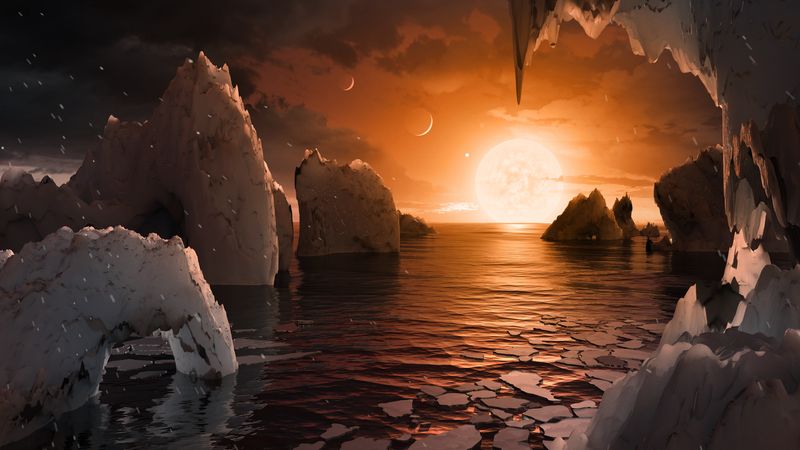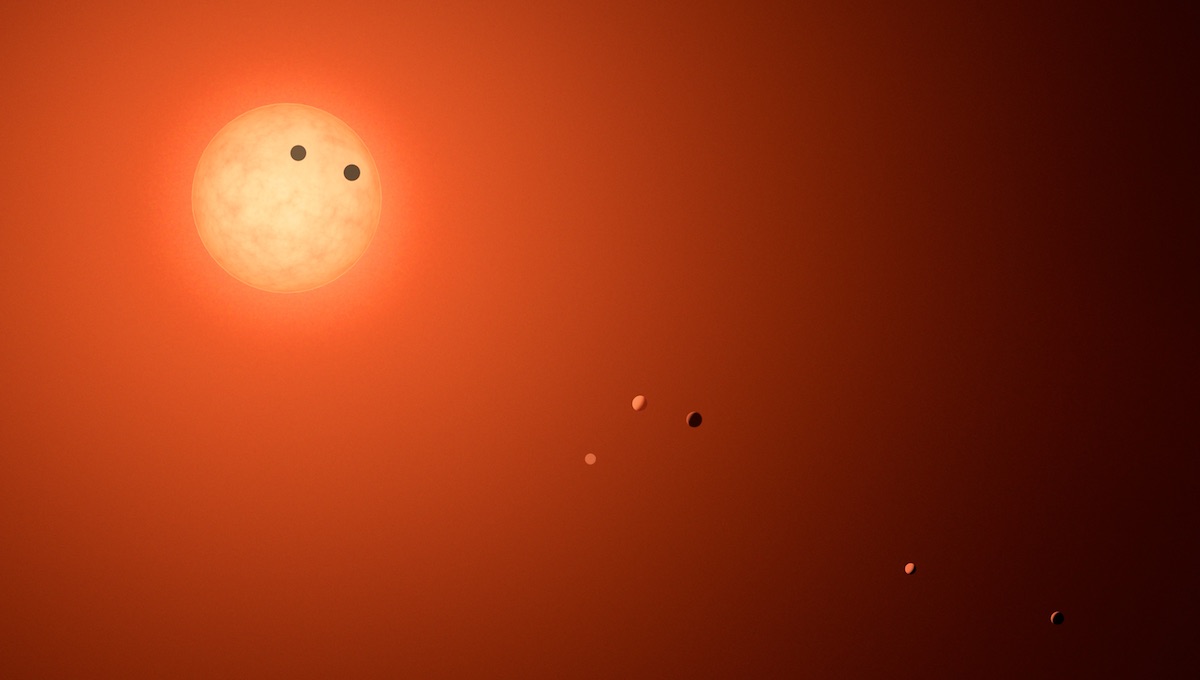Data from Hubble shows that there may be water on the TRAPPIST-1 planets

Perhaps this is what the surface of the planet TRAPPIST-1f looks like. Source: NASA
After astronomers announced the discovery of the TRAPPIST-1 system, where several Earth-like planets revolve around a star, many publications immediately appeared on the topic "life on TRAPPIST-1 exoplanets". If there was only one earth-like planet in a potentially habitable zone, then it would have been talked and forgotten, as often happens. But in the system at once, three planets are in the “warm” zone, where the existence of water in liquid form is possible, and hence the life that water supports.
Scientists can only guess if water is actually on these planets. Until recently, it was just a discussion on this topic. But now there is evidence that indirectly confirms the existence of H 2 O in the TRAPPIST-1 system. Scientists have obtained this information thanks to the Hubble telescope.
True, no matter how powerful and functional this apparatus may be, scientists still cannot see the water on exoplanets. This is not about this, but about the observation data on the ultraviolet dynamics of the star of the TRAPPIST-1 system. After studying the indicators for a long period, astronomers simulated a change in the distribution of radiation over a period of several billion years. Then, based on the results obtained during the testing of the first model, the scientists built additional models for each of the three “warm” planets of the system. We are talking about models that allow tracing the effect of star radiation on possible water sources of each of the exoplanets TRAPPIST-1.
')
Using information on the origin and evolution of the planets, which is now generally accepted, astronomers from the University of Liege (Belgium) tried to imagine how the system itself was evolving. Most likely, initially exoplanets in the TRAPPIST-1 system were formed much further from their star, in a cold zone filled with the substance of which comets in the solar system are made. That is, it is ice, frozen gases, etc. Thus, many of the TRAPPIST-1 planets, if not all, received initially solid reserves of ice. As the planets approached their star over the past 8 billion years (time frames for obvious reasons, hypothetical) objects were heated, the planets, especially those closest to their star, began to lose water.
The inner planets, as far as can be judged, have lost a huge amount of their reserves - their volume is about 20 times greater than the volume of water in the oceans and seas of the Earth. But those planets that are a little further from the star of the TRAPPIST-1 system are likely to have saved water. And she can be there now in liquid form.
“Planets the size of Earth can capture huge amounts of water at the beginning of formation, but it all depends on a large number of factors, so it’s hard to say exactly how many,” said one of the research participants. "We can say that the inner planets probably lost a huge amount of water, the outer ones less."

Scientists are now planning to carefully monitor the system with the Hubble telescope. In the course of the work, astronomers will try to detect hydrogen around the exoplanets of this system. If there is a lot of it, it can mean that the planets have an atmosphere, and in it - water vapor, which, under the influence of UV radiation, loses hydrogen.
Regardless of the results, the chances of life on these planets are small. The fact is that the star in the TRAPPIST-1 system is a red dwarf. The catalog name of the star is 2MASS J23062928-0502285 , it is eight times smaller than the Sun. The data of scientists from the gPhoton project show that red dwarfs regularly bombard the surface of their planets with streams of high-energy particles. And if this is true, complex organic structures simply cannot exist - they are destroyed. This applies even to not too complex compounds, not to mention such complex structures as RNA and DNA.
Whatever it was, this system is one of the most interesting star systems that scientists have encountered over the entire period of astronomical observations.
Source: https://habr.com/ru/post/370775/
All Articles